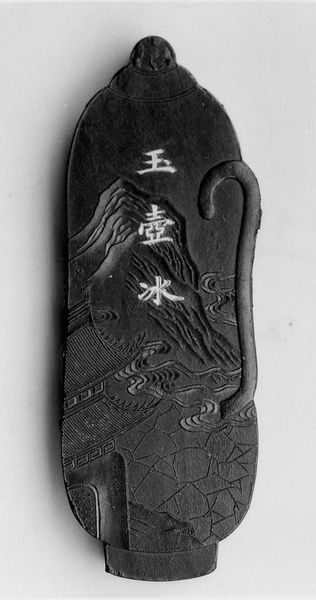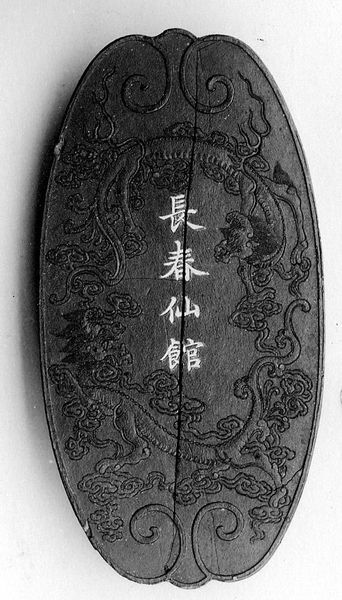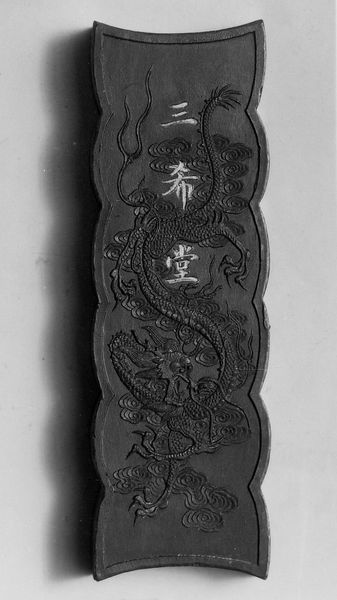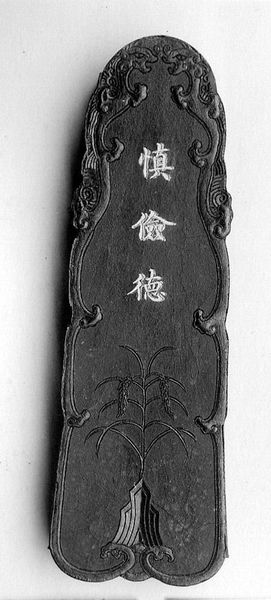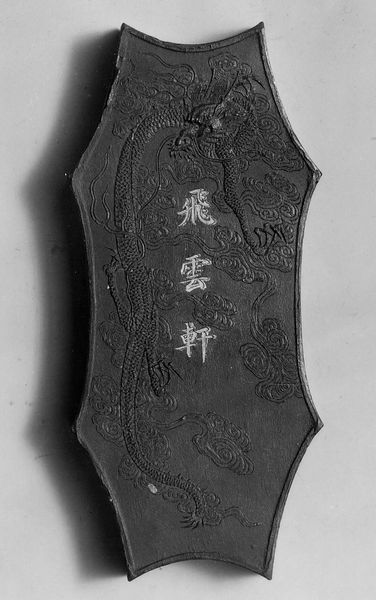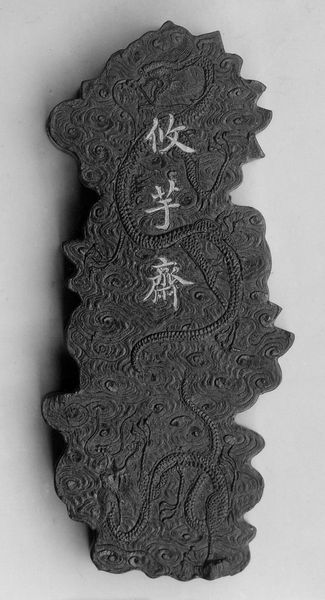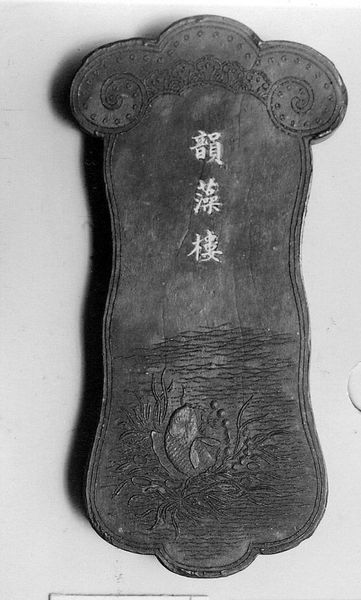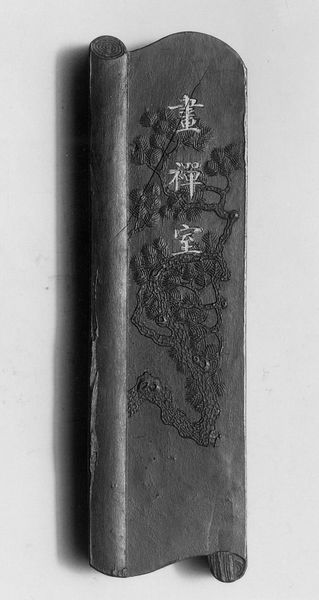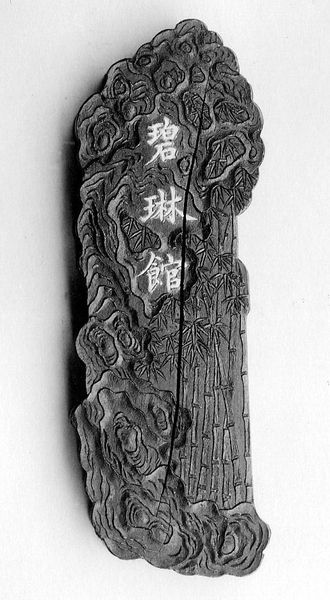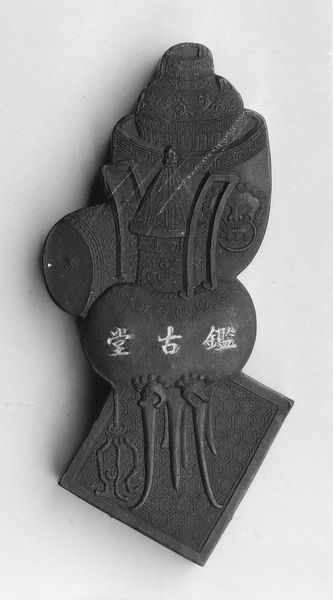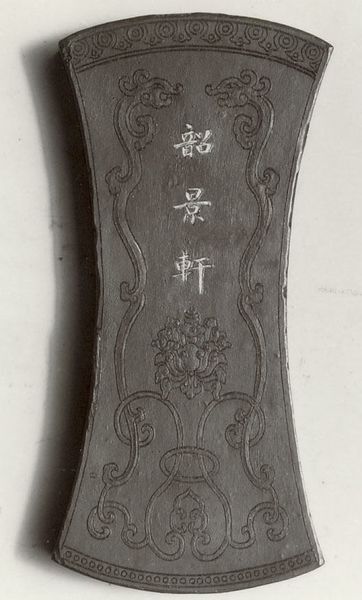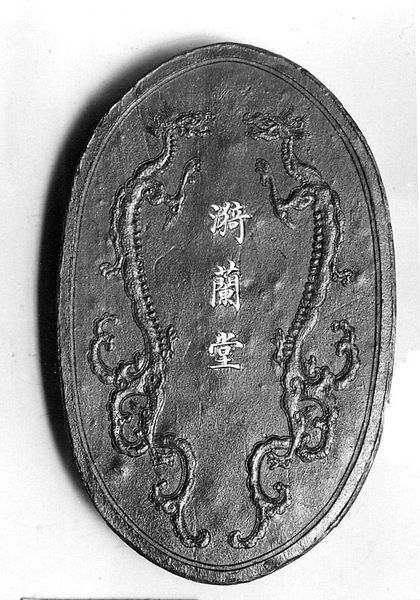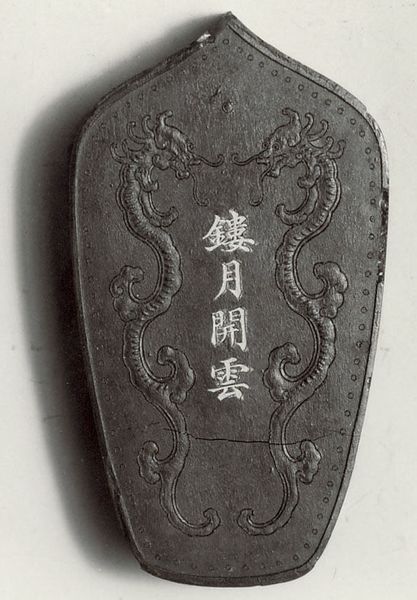
carving, relief, ink, sculpture, wood
#
carving
#
sculpture
#
asian-art
#
relief
#
ink
#
geometric
#
sculpture
#
wood
#
calligraphy
Dimensions: H. 5 1/4 in. (13.3 cm); W. 1 5/8 in. (4.1 cm)
Copyright: Public Domain
Curator: Let's discuss this ink rubbing. It's titled "Viewing Antiquities Hall" and thought to be from between 1871 and 1933, attributed to Jian Guzhai. It currently resides here at the Met. Editor: My immediate reaction is one of formality and almost somber reflection. The dark ink against the pale ground creates such stark contrasts and this elevates a simple tool to object of importance. Curator: Absolutely, and within the broader context of the late Qing Dynasty extending into the early Republic era in China, the meticulousness and precision displayed becomes deeply significant. Reflect for a moment that literati culture—for whom inkstones like this were vital—experienced disruption through the dynastic transition and a re-evaluation of class power. The ink rubbing, often utilizing carved, recycled wood as we see here, is also itself tied into debates around the commodification of art objects that really accelerated during this period. Editor: I'm intrigued by the interplay between the flat surface and the sculptural relief. The carvings give dimension, wouldn’t you agree? The geometric details and carefully rendered still-life object really are a technical display, especially since they add visual layers to the calligraphy above. It begs one to consider line, composition and visual harmony... How would this fit into Asian art more broadly? Curator: As an element of traditional art and learning practices that emphasized self-cultivation through activities like calligraphy, it becomes representative of conservative thought, which then had political connotations. Consider, too, who had access to producing ink rubbings such as these during this turbulent transitional period. So many of the people enjoying such specialized knowledge and training would most likely have aligned with or benefitted from conservative governance, but might not openly discuss so during political transformation. Editor: Well, no matter the complex associations you bring up, there's an undeniable beauty to the interplay between the dark surface, white writing, carved ornament, and formal arrangements within. Its physical form holds weight. Curator: Indeed, both literally and metaphorically—considering the historical and cultural context and what it potentially stood for! Thank you for providing a counterpoint. Editor: It allows us to engage through various important viewpoints, wouldn't you say?
Comments
No comments
Be the first to comment and join the conversation on the ultimate creative platform.
